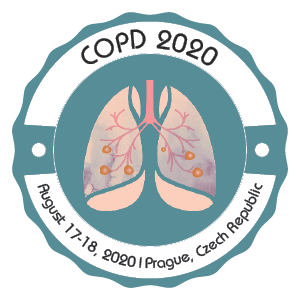Ferenc Petak
Faculty of Medicine, University of Szeged, H-6720, Szeged, Hungary
Title: Compromises airway function and respiratory tissue viscoelasticity in patients with diabetes mellitus
Biography
Biography: Ferenc Petak
Abstract
Since structural and functional alterations of matrix proteins following chronically elevated serum glucose level cause adverse structural and functional changes in the collagen-elastin network, the lungs are expected to be among the most affected organs in DM. Thus, we aimed at characterizing the alterations in the mechanical properties of the airways and respiratory tissues in patients with DM, and we related the lung function outcomes to those obtained in patients without metabolic disorders. In a prospective consecutive study design, forced oscillation technique was used to measure the input impedance spectra of the respiratory system (Zrs) in cardiac surgery patients with diagnosed DM (Group DM, n=124) and in matched controls (Group C, n=281). The airway resistance (Raw), the tissue damping reflecting tissue resistive properties (G), and the elastance representing respiratory tissue stiffness (H) were identified from the Zrs spectra by a well-validated model fitting. Hemoglobin A1c was significantly higher in Group DM (6.97±0.1[SE]%) than in Group C (5.79±0.2%), confirming the overexpression of glycated hemoglobin in the DM patients. Patient in Group DM exhibited significantly elevated Raw (8.8±0.6 vs. 5.7±0.3[SE] cmH2O.s/l, p<0.001), G (12.4±0.7 vs. 8.6±0.3 cmH2O/l, p<0.001) and H (32.6 ±0.3 vs. 27.5±0.3 cmH2O/l, p<0.001). These findings suggest compromised airway function in DM patient, most probably resulting from the sustained contractile response of the bronchial smooth muscle. The deteriorations in respiratory tissue viscoelasticity in DM may be a consequence of lung volume loss, interstitial edema and/or disturbance in the elastin-collagen fiber–fiber interaction.

